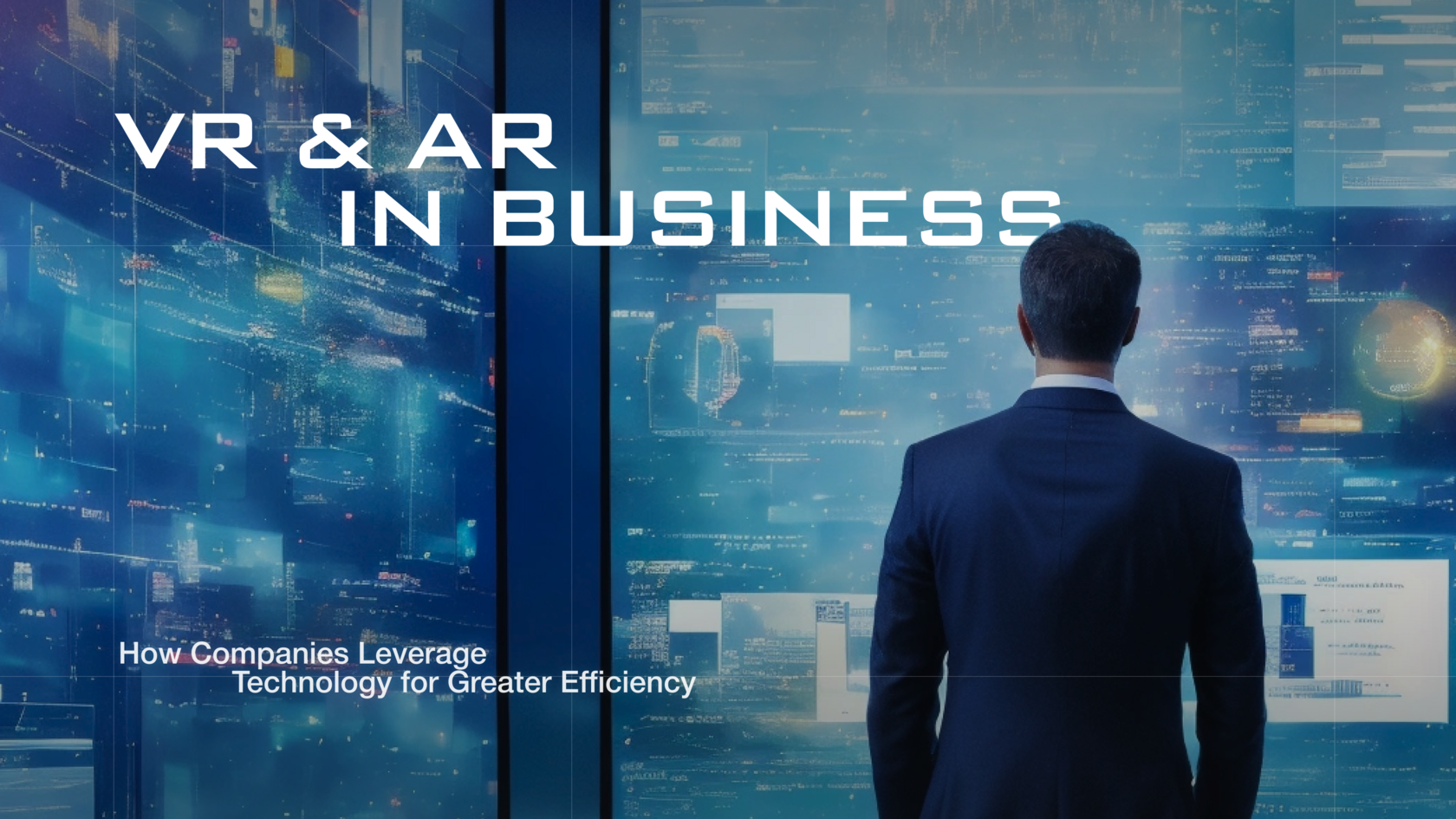As the momentum behind virtual reality (VR) and augmented reality (AR) technologies grows, these innovations are reshaping business strategy across industries, driving productivity, safety, and operational efficiency to unprecedented levels. Companies like VR Concept are at the forefront, transforming complex business challenges through immersive solutions. This article delves into the transformative impact of VR and AR on business processes and their implications for the future of industry [1].
Understanding VR and AR in a Business Context
In business, VR and AR offer immersive tools for simulating real-world scenarios, streamlining operations, and enhancing decision-making. VR replaces physical environments with digital simulations, ideal for training and scenarios that demand high levels of immersion. Conversely, AR overlays digital information onto real-world settings, enriching physical environments with real-time insights—a powerful asset for industries reliant on precision and accessibility [2].
Key Benefits of VR and AR in Business
1. Enhanced Training and Skill Development
VR and AR are revolutionizing employee training, providing controlled environments where staff can develop complex skills without real-world risks. Companies like VR Concept have embraced VR simulations to prepare employees for high-stakes scenarios. In industrial settings, for example, VR allows workers to safely train with heavy machinery, significantly reducing workplace accidents and enhancing preparedness [3].
2. Efficiency and Process Optimization
AR devices can overlay data onto physical objects, guiding employees through complex tasks in real time. This functionality, especially valuable in manufacturing, logistics, and product design, boosts precision while reducing task completion times. VR and AR's role in streamlining workflows is invaluable as businesses increasingly demand efficiency and accuracy in competitive markets [4].
3. Cost Reduction and Resource Savings
By modeling production processes, companies can spot inefficiencies before they manifest in real-world operations. VR Concept's platform, which allows for detailed prototyping and testing, is a prime example of how businesses can iterate designs without costly physical prototypes, saving both time and resources [5].
Applications of VR and AR Across Industries
Manufacturing and Maintenance
In manufacturing, VR and AR streamline equipment design, assembly, and maintenance. With AR-enabled headsets, technicians receive real-time insights and instructions, reducing downtime and error rates. By minimizing manual processes, companies not only enhance productivity but also support workforce empowerment through technology [6].
Retail and Customer Experience
AR has made significant inroads in retail, enabling customers to preview products in their home environments through mobile apps. For example, IKEA’s AR tool allows customers to visualize furniture in their own spaces, boosting confidence in purchasing decisions. Meanwhile, VR is transforming customer engagement through virtual stores, providing immersive experiences that redefine shopping interactions [7].
Healthcare and Medical Training
VR is pioneering a transformative approach to medical training, allowing healthcare professionals to practice procedures in virtual environments. This technology enhances skills without risking patient safety. Meanwhile, AR assists in diagnostics, overlaying real-time patient data to improve clinical decision-making and outcomes [8].
Logistics and Intralogistics Safety
Companies like VR Concept develop VR-driven solutions to improve logistics safety, crafting virtual intralogistics environments where workers can practice safety protocols. These VR simulations are essential for reducing accidents in complex logistics systems, ensuring safer and more efficient material handling [9].
The Role of VR and AR in Remote Collaboration
With remote work becoming more prevalent, VR and AR provide powerful tools for teamwork, transcending geographic barriers. VR enables virtual meetings in 3D-modeled spaces, where participants can interact with digital models and data in real time. VR Concept’s collaborative solutions are tailored for brainstorming, training, and project discussions, making remote work as immersive and productive as in-office collaboration [10].
Challenges and Considerations in Implementation
Initial Investment and Technical Expertise
While the advantages of VR and AR are substantial, the initial costs of equipment and software can be a hurdle, particularly for small to medium-sized enterprises (SMEs). Nevertheless, companies like VR Concept are developing scalable solutions to make these technologies more accessible across business sizes [11].
Data Security and Privacy
The proliferation of digital environments brings forth data security concerns. Safeguarding corporate information in VR and AR spaces requires robust cybersecurity measures to prevent potential breaches, especially as virtual and augmented platforms expand [12].
The Future of VR and AR in Business
The trajectory of VR and AR technologies points toward further innovation and deeper integration into business processes. Future advancements are expected to make VR and AR solutions even more immersive, versatile, and accessible. As companies like VR Concept drive the development of VR and AR applications tailored to business needs, these technologies will likely become essential to various sectors, promoting efficiency, innovation, and sustainable growth [13].
As these innovations evolve, businesses will not only enhance their internal operations but also deliver unique, memorable experiences that set them apart in the marketplace [14].
References
- Lewczuk, K., & Żuchowicz, P. (2024). Virtual Reality Application for the Safety Improvement of Intralogistics Systems. Sustainability, 16(6024).
- Špirková, S., Straka, M., & Saniuk, A. (2024). VR Simulation and Implementation of Robotics: A Tool for Streamlining and Optimization. Appl. Sci., 14(4434).
- Nleya, S.M., & Velempini, M. (2024). Industrial Metaverse: A Comprehensive Review, Environmental Impact, and Challenges. Appl. Sci., 14(5736).
- Royo-Vela, M., & Velasquez Serrano, M. (2021). Value Co-Creation Process and Measurement in 4.0 SMEs: An Exploratory Research in a B2B Marketing Innovation Context. Administrative Sciences, 11(20).
- Korniejenko, K., & Kontny, B. (2024). The Usage of Virtual and Augmented Reality in Underwater Archeology. Appl. Sci., 14(8188).
- Jalo, H., et al. (2022). Extended reality technologies in small and medium-sized European industrial companies: level of awareness, diffusion and enablers of adoption. Virtual Reality, 26(1745-1761).
